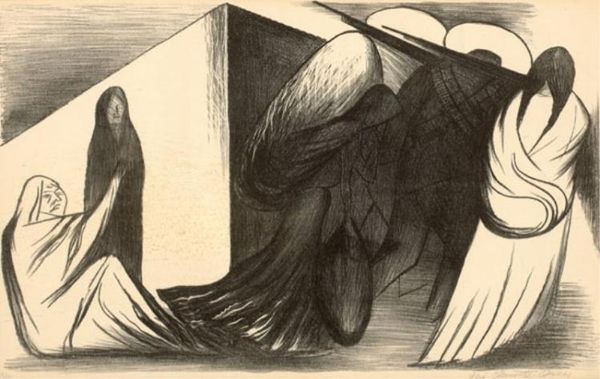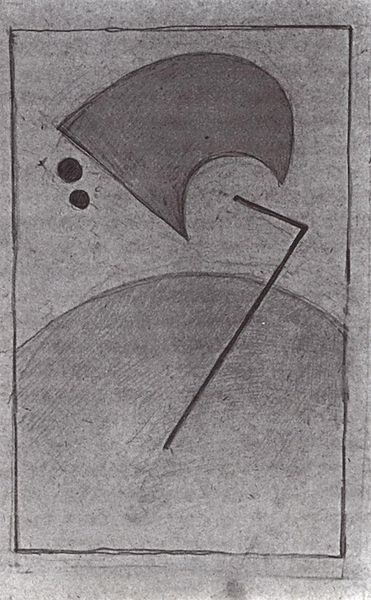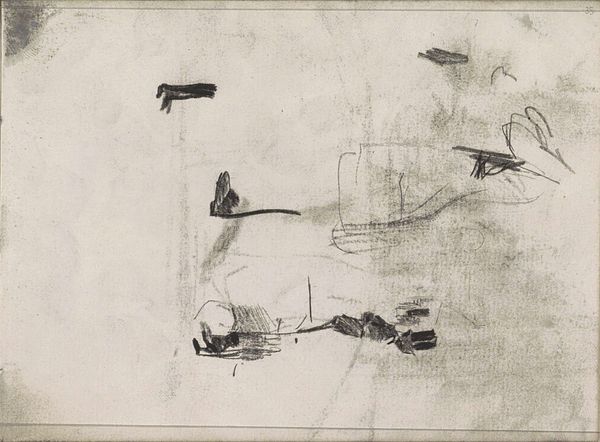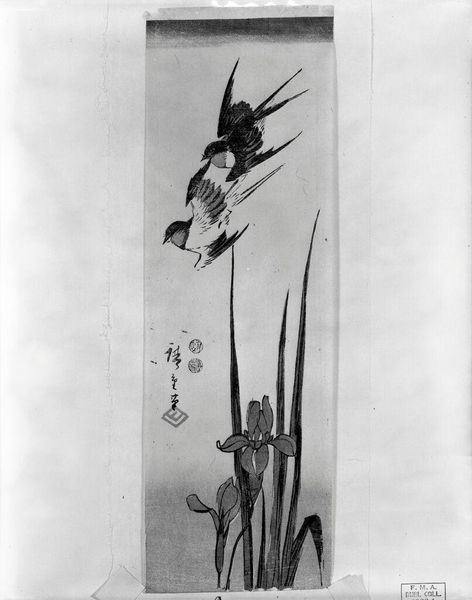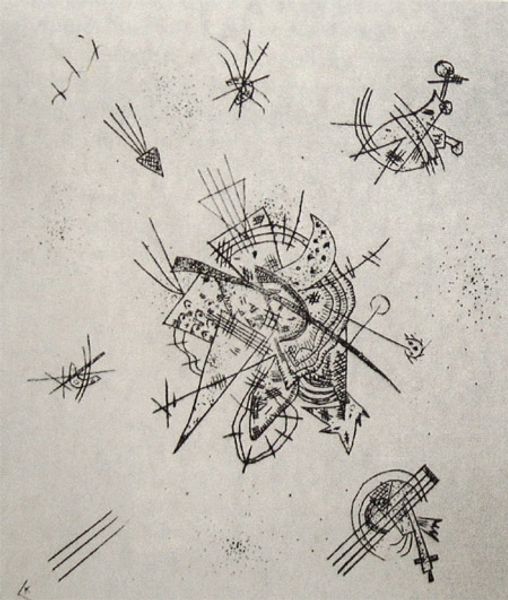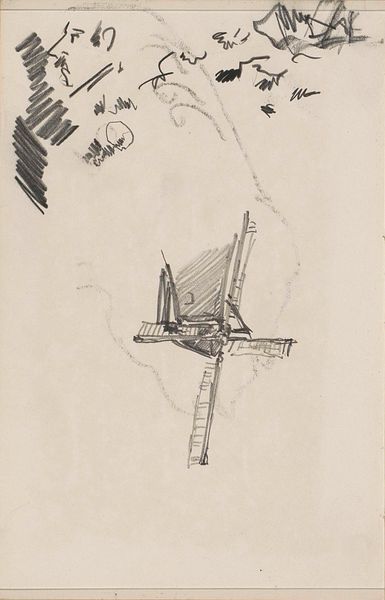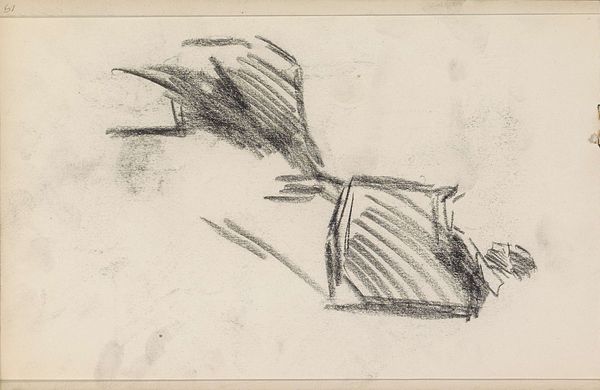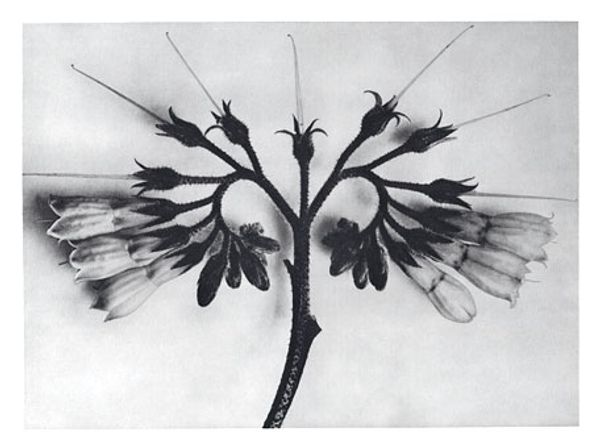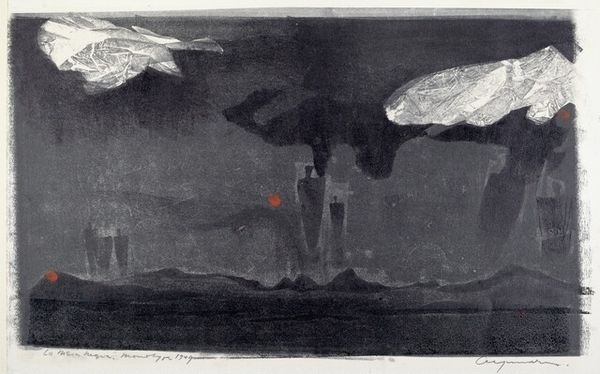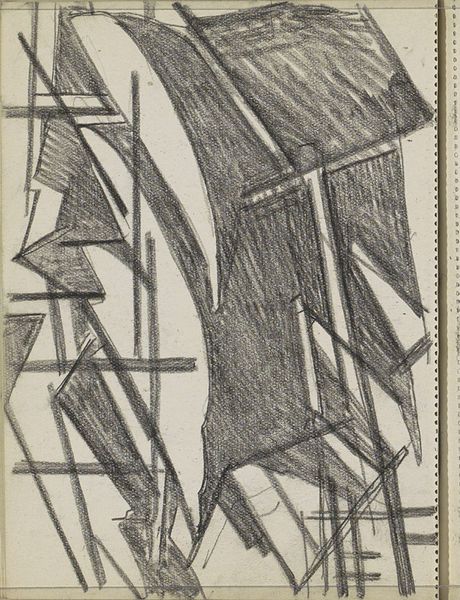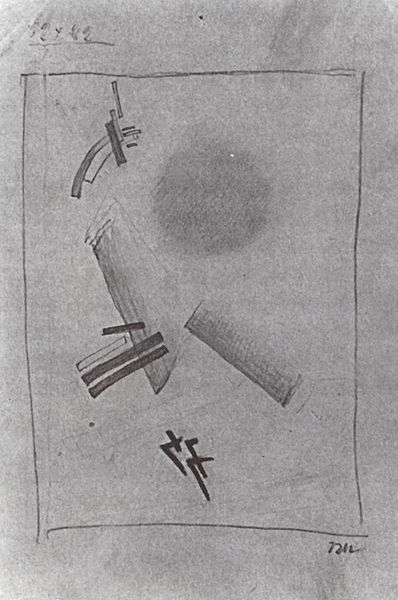
painting, watercolor, ink
#
painting
#
asian-art
#
landscape
#
watercolor
#
ink
#
geometric
#
line
#
calligraphy
#
monochrome
Dimensions: 44 1/16 x 10 3/4 in. (111.9 x 27.3 cm)
Copyright: Public Domain
Ōtagaki Rengetsu created this ink-on-paper painting of a mountain village in autumn during the 19th century. The image evokes a sense of tranquility and simplicity through its minimalist depiction of rural life. Made in Japan during the late Edo and early Meiji periods, this work reflects the cultural values of the time, such as the reverence for nature and the appreciation of understated beauty. Rengetsu was a Buddhist nun, and her life in a monastery influenced her art. You can see elements of Zen Buddhism in the painting through the use of open space and the attempt to capture the essence of the landscape rather than its exact appearance. It is not clear whether the work is conservative or progressive, but one could view the simplicity as a critique of the rapidly changing world around her. By researching Rengetsu's biography, as well as the historical context of 19th-century Japan, we can better understand the meaning and significance of this work within its cultural and institutional context.
Comments
No comments
Be the first to comment and join the conversation on the ultimate creative platform.
